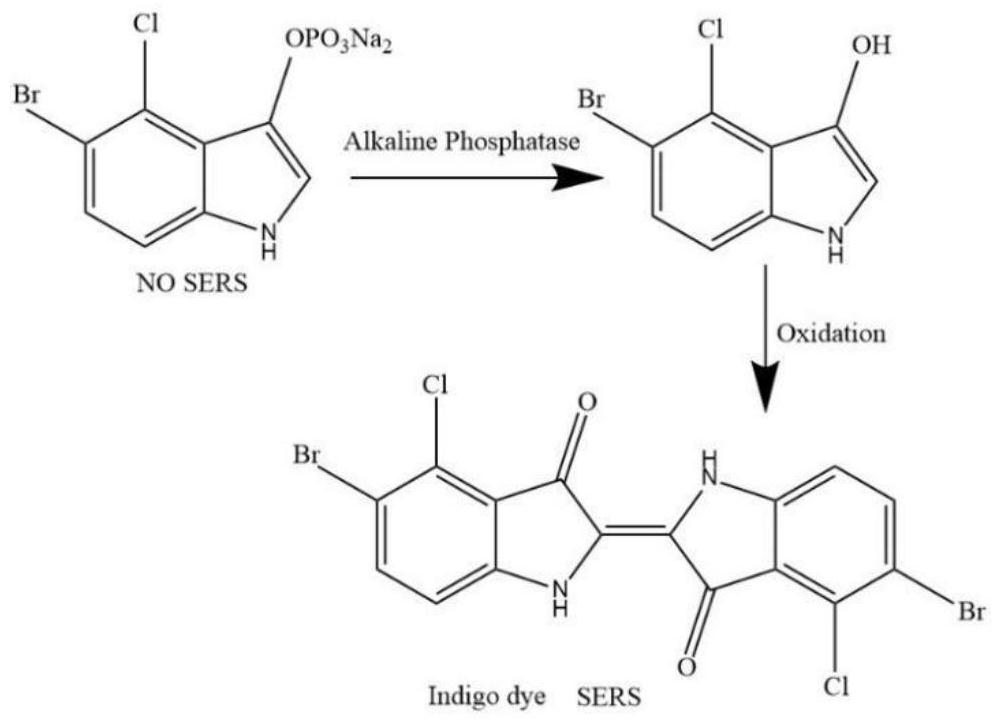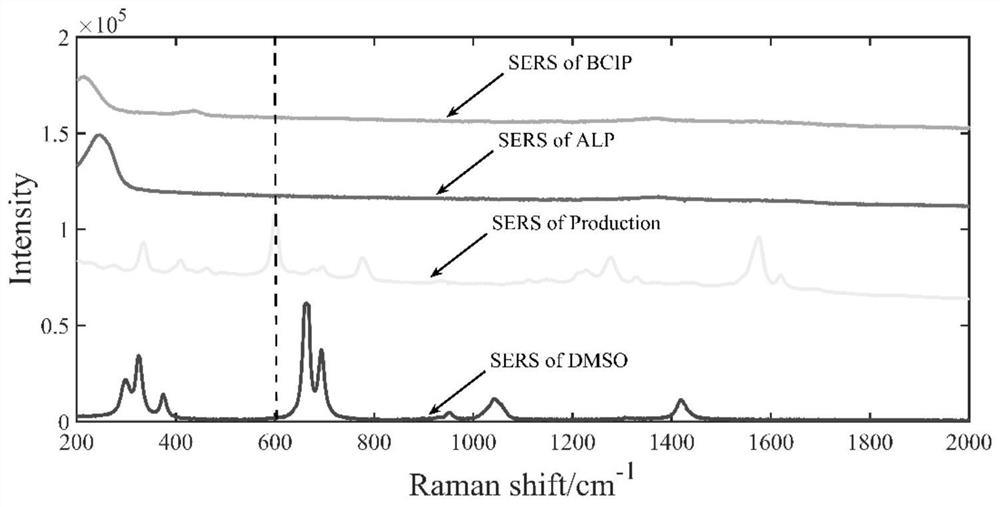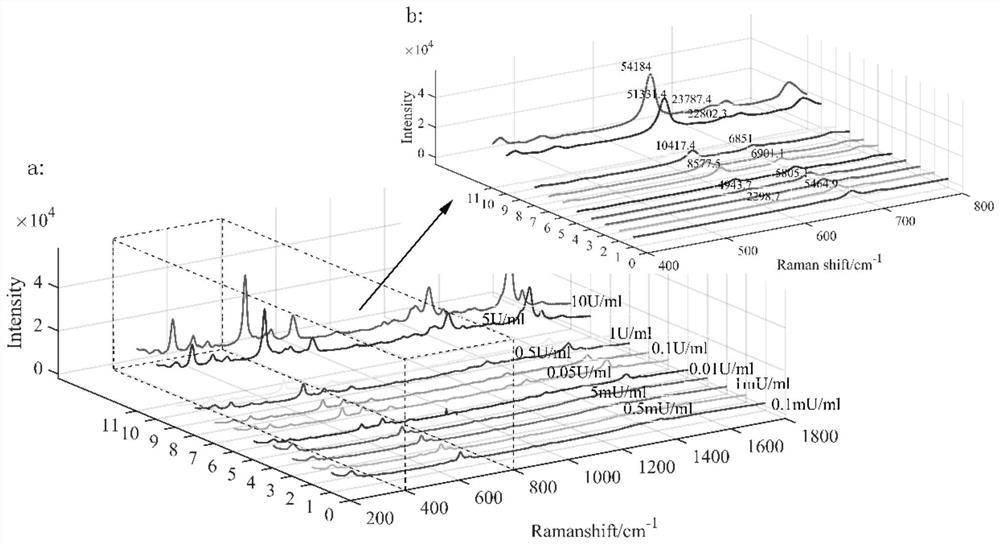Method for quantitatively detecting alkaline phosphatase in seawater based on surface enhanced Raman spectroscopy technology
A surface-enhanced Raman and spectroscopic technique, applied in the field of Raman spectroscopic detection, can solve the problems of complex experimental steps and complex sample pretreatment.
- Summary
- Abstract
- Description
- Claims
- Application Information
AI Technical Summary
Problems solved by technology
Method used
Image
Examples
Embodiment 1
[0025] Example 1 Quantitative Model
[0026] 11 900μL of different activities (10U / mL, 5U / mL, 1U / mL, 0.5U / mL, 0.1U / mL, 50mU / mL, 10mU / mL, 5mU / mL, 1mU / mL, 0.5mU / mL, 0.1mU / mL) ALP solution was mixed with 1mg / mL and 100μL BCIP solution and incubated for 2h, respectively, after adding 20% DMSO solution, the respective SERS signals were measured, and the obtained spectrum was as follows: image 3 shown.
[0027] from image 3 It can be seen that there is no direct linear relationship between the SERS characteristic peak intensity of the product BCI oxidized dimer and the ALP concentration, because the intensity of the Raman spectrum is affected by factors such as laser power stability, enhanced reagent uniformity, and solvent background noise. It is difficult to directly use the intensity of the characteristic peaks of the Raman spectrum to perform quantitative analysis. Therefore, the added DMSO solvent was added at 677 cm -1 The characteristic peaks of the Raman spectrum nea...
Embodiment 2
[0032] Example 2 Seawater verification test
[0033] Fresh seawater samples were collected from the East China Sea (30°39'48"N, 122°29'48"E) in December 2020. The sample is ocean surface seawater, which is directly sampled by fishing boats. Mix 900 μL fresh seawater sample with 1 mg / mL and 100 μL BCIP solution for 2 h, add 20% volume DMSO solution and measure the SERS signal, the obtained spectrum is as follows Figure 5 shown.
[0034] like Figure 5 as shown, 600cm in the picture -1 There are obvious Raman spectral peaks at -1The Raman spectral intensity at the wavenumber reaches 6389.6, which is due to the Raman spectral peaks caused by the C-S-C symmetrical stretching vibration in DMSO. The ratio of the two peaks is 0.377. This value is substituted into the above model to realize the quantitative detection of the ALP activity of the seawater sample. The ALP activity of the water sample obtained was equivalent to 0.5 mU / mL E. coli ALP activity.
[0035] Using BCIP as ...
PUM
 Login to View More
Login to View More Abstract
Description
Claims
Application Information
 Login to View More
Login to View More - R&D
- Intellectual Property
- Life Sciences
- Materials
- Tech Scout
- Unparalleled Data Quality
- Higher Quality Content
- 60% Fewer Hallucinations
Browse by: Latest US Patents, China's latest patents, Technical Efficacy Thesaurus, Application Domain, Technology Topic, Popular Technical Reports.
© 2025 PatSnap. All rights reserved.Legal|Privacy policy|Modern Slavery Act Transparency Statement|Sitemap|About US| Contact US: help@patsnap.com



